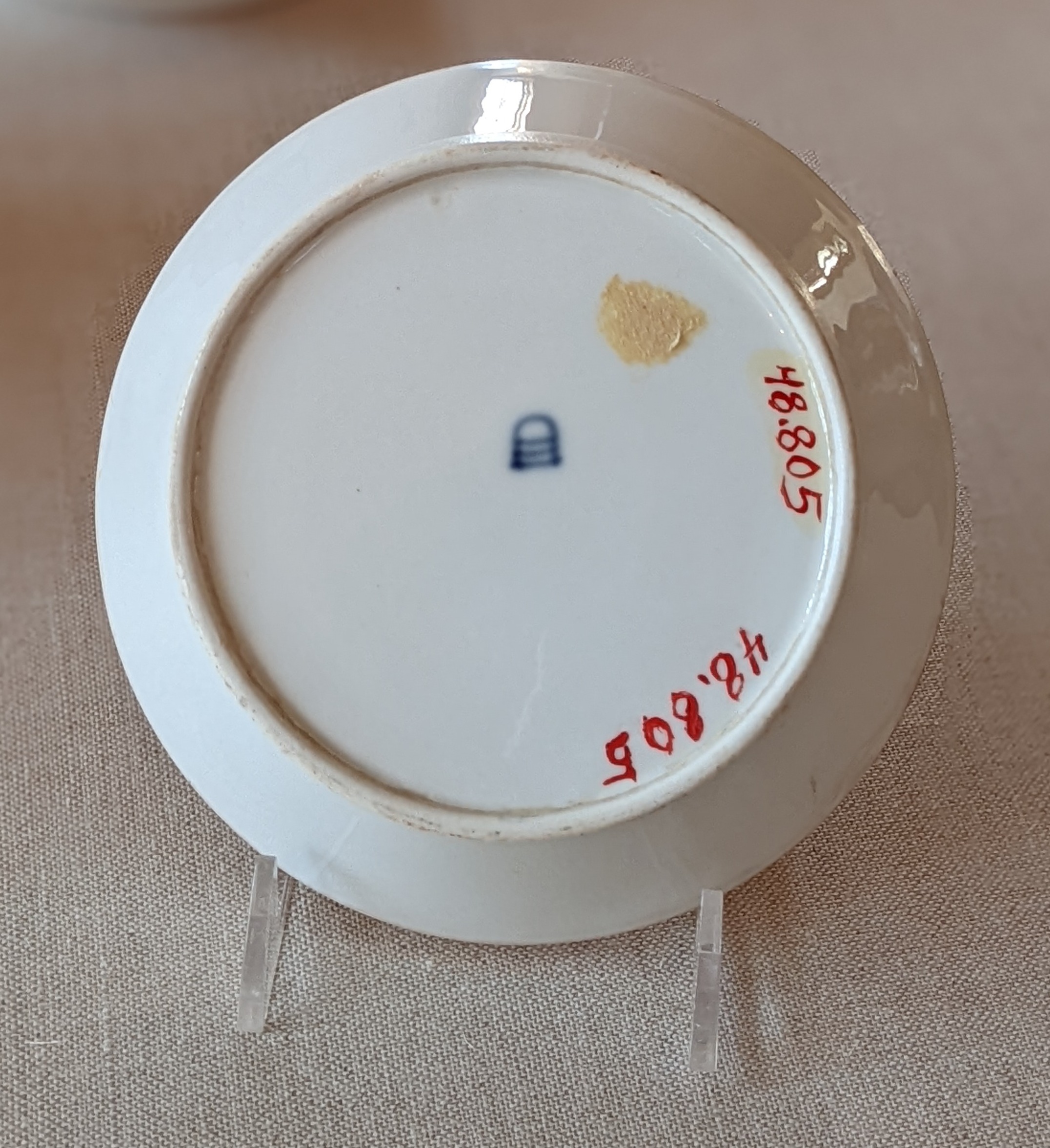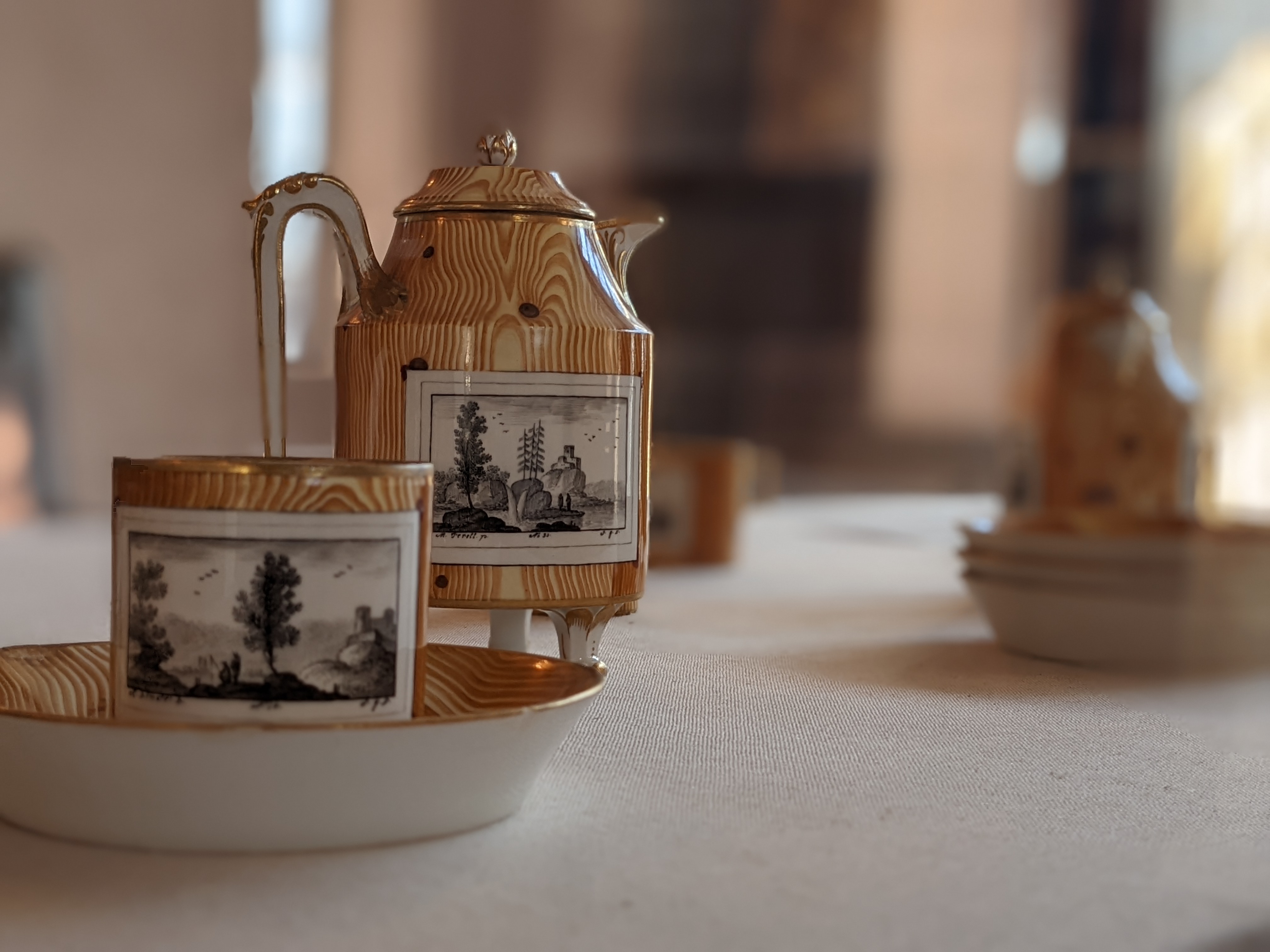

The Vienna Porcelain Manufactory was established in 1719 by Claudius Innocentius du Paquier, making it the second oldest porcelain manufacturer in Europe. Not too long after the manufactory’s establishment, it and du Paquier came under financial difficulties. Du Paquier happened to be a member of the Viennese Imperial Court, and in 1744 sold the manufactory to the Austrian Empress Maria Theresa. It was from then on that it became known as The Imperial and Royal Porcelain Manufactory of Vienna.

After the manufactory came under imperial ownership, it began marking its porcelain with a “bindenschild”, or what is now commonly referred to as a “beehive mark”. The bindenschild itself was a representation of the imperial family’s coat of arms, and when looked at upside down could be mistaken for a beehive, as shown in the image. The mark would be applied to the underside of a piece in a blue underglaze, and in 1783 the manufactory also began to add date marks.
Production quality would take a turn for the worse starting around 1805, and The Imperial and Royal Porcelain Manufactory of Vienna inevitably closed its doors in 1864. What makes this manufactory so interesting, though, is how many forgeries of its china have been made over the years, including well into the present day.
Most forgers attempt to trick prospective buyers by applying their own version of the beehive mark to their porcelain. These marks can be spotted as forgeries in a few different ways:
Also, it was mentioned earlier that the manufactory would apply their bindenschild mark and, starting in 1783, a year marker to the bottom of their porcelain. These are the only markers that the manufactory would add, and so any porcelain pieces with additional marks or writings such as “Vienna” or “Royal Vienna” are also likely forgeries.
On a more lighthearted note, not every variation of the beehive mark is intended as a forgery. A number of porcelain manufacturers over the years have incorporated the famous beehive mark into their own manufacturer’s marks as a nod to the original bindenschild.
The Salisbury House Collection contains a Vienna Porcelain tea set, which is currently on display in Charles’s Room. Check out our website for up-to-date hours and tour times if you are interested in seeing the tea set in person.
